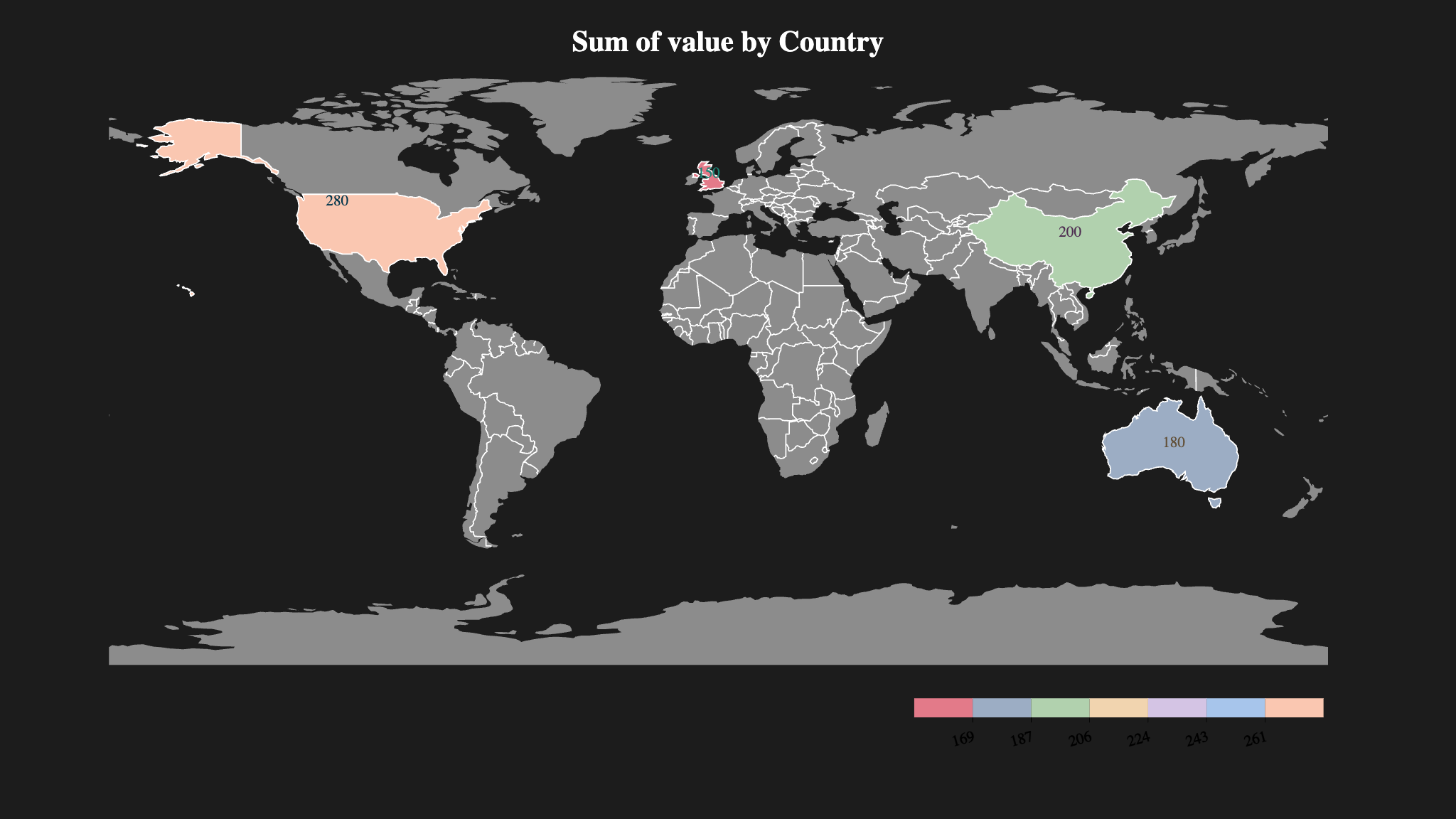Map
Working with map is super simple and straightforward on Columns. As long as you have location information in your data, choosing map chart type will automatically render the supported map for you.
Supported maps
Currently, Columns supports 3 maps, if you have strong need in your market, get in touch to make a request!
- Japan Map: Prefecture level or City level.
- USA map: State level, county level, or city / zip code level.
- World map: Country level.
- Europe map: Country level.
For each map, you can choose 3 different rendering types:
SpikeBubbleChoropleth
We're working on bringing other maps into the system, including other countries and worldwide map, this doc will be updated as we add more maps.
Map anatomy
Firstly, map is rendered by location key, if related map info is detected, it will load proper map to render it.
In US map, this includes:
- State name: short name or full name, column value like
WAorWashingtonare valid state names. - State code: US state code
- Zip code: 5 letter of zip code, for example
98033, when ZIP code detected, a county/city level map will be rendered. - City name: just city name, render city level map when detected
- County name: just county name, render county level map when detected
- County code: 5 letters of county code, render city level map when detected
- County code-3: 3 letters of county code, render county level map when detected.
To check if your location value (state, county, city, etc.) is valid, you can search for it in this resource file that Columns uses to render maps:
If you're using county FIPS codes, ensure they are provided as either 3-digit or 5-digit codes. Be aware that tools like Excel or Google Sheets may automatically strip leading zeros when the column is formatted as a number. To preserve leading zeros (e.g., keeping "015" instead of converting it to "15"), set the column format to Text.
For Japan map, this includes:
- Prefecture name: short name or full name, column value like
TokyoorTokyo-toare valid prefecture names. - City name: just city name, render city level map when detected.
Note that, Columns supports location names in both English and Japanese, so you can use either language for prefecture and city names. Check if your location value (prefecture, city, etc.) is valid by searching in this resource file that Columns uses to render maps:
For Europe map, this includes:
- Country name: e.g.,
Germany,France,Czech Republic - ISO2 code: e.g.,
DE,FR,CZ - ISO3 code: e.g.,
DEU,FRA,CZE - UN numeric code (3-digit, zero-padded): e.g.,
276for Germany - Common aliases: e.g.,
UKfor the United Kingdom,Russiafor the Russian Federation
Columns matches your data against a curated alias list and embedded geo features. This means your data will work even if it uses:
- ISO codes
- Alternative spellings
- Local names
- Common abbreviations
Behind the scenes, Columns uses the europe_countries.json file to map all known aliases to standardized country entries, you can search for location value here:
- [europe_countries.json] (https://columns.ai/api/resource/json/europe_countries)
For world map, this includes:
- Country name: official name or short name, column value like
United StatesorUSare valid country names. - Country code: 3 letters of country code, for example
USA,CHN. when country code detected, a country level map will be rendered.
To check if your country name is valid, you can search for it in this resource file that Columns uses to render maps: countries.json
In below, example, the column 'state' carries state short name, hence US map rendered at state level

Secondly, there are a bunch of options that you can customize the map.
By clicking the map itself, its settings shall show up on the right side, take a look at the anatomy picture:

World map example:
Data example with country codes.

Per capita
In above settings, you may have noticed that, we have options for you to quickly get per capita analysis.
This is very convinient since people find it's more meaningful when looking at density value on the basis of its population rather than raw values.
Here we present the most common options - 1M (metric per 1 million people), 100K (metric per 100,000 people), and 1K (metric per 1000 people).
This feature is only available for US map currently, and it allows you to visualize your metric on the basis of population.
Population data: Columns fetches the latest population data from public service to ensure it's update to date.
Note: Per capita is only available for US map currently.
Map Examples
There should be a bunch of examples published and shared in Columns community, you can find them in the Discover page.